November 16, 2025 11:36 am
Terrestrial ecosystems encompass the interactions between organisms and their environment on land, collectively known as terrestrial ecology. These interactions are heavily influenced by variations in topography, including valleys, mountains, and slopes, which cause differences in both material and biotic diversities. Altitudinal and latitudinal variations further influence climatic patterns, impacting the distribution of plant and animal life, resulting in different ecosystem segments within the larger biosphere. The two primary limiting factors for terrestrial ecosystems are moisture and temperature.

Other Useful links:
- Millennium Development Goals (MDGs): A Comprehensive Analysis
- The Chipko Movement: Hugging Trees to Save the Planet
- Global Efforts to Save Endangered Vaquita Porpoise
- 40% of the Amazon Rainforest Unprotected: Why This is Critical for Climate Change
- Reducing CO2 Emissions in India’s Transport Sector by 2050: A High-Ambition Approach
- China’s Carbon Market and Its Mechanisms
- India’s Greenhouse Gas Emissions Increase Since 2021
- Mankidia Community Becomes the 6th PVTG to Get Habitat Rights Over Forests in Odisha
- Indian Megacities Lag in Air Pollution Control Despite Lion’s Share of Financial Support
- Sustainable Development Goals (SDGs): Relevance in UPSC Mains and Prelims
- Water Security in India: Challenges and Solutions
1. What is Terrestrial Ecosystem?
Definition:
Terrestrial ecosystems are ecosystems found on land. They include diverse environments ranging from lush forests to arid deserts and are influenced by factors such as temperature, rainfall, altitude, and soil type.
Types of Terrestrial Ecosystems:
- Forests:
- Tropical Rainforests: Located near the equator (e.g., the Amazon Rainforest), characterized by high rainfall and biodiversity.
- Temperate Forests: Found in regions with four distinct seasons (e.g., Eastern U.S., Europe).
- Boreal Forests (Taiga): Found in northern regions with cold climates (e.g., Canada, Russia).
- Deserts:
- Hot Deserts: Such as the Sahara, with extreme temperatures and scarce rainfall.
- Cold Deserts: Like the Gobi Desert, where winters are frigid but precipitation is still minimal.
- Grasslands:
- Savannas: Tropical grasslands with scattered trees (e.g., African Savanna).
- Temperate Grasslands: Known as prairies or steppes, with rich soils ideal for agriculture.
- Tundra:
- Arctic Tundra: Located near the poles, characterized by permafrost and minimal vegetation.
- Alpine Tundra: Found at high altitudes, where temperatures are low year-round.
Key Characteristics of Terrestrial Ecosystems:
- Climate Dependency:
- Temperature and precipitation patterns determine the type of ecosystem. For example, rainforests thrive in humid conditions, while deserts adapt to dryness.
- Soil as a Critical Component:
- Soil quality influences plant growth, which in turn supports herbivores and carnivores in the food chain.
- Diverse Flora and Fauna:
- Organisms are adapted to deal with varying temperatures, water availability, and sunlight. For instance, cacti store water in deserts, while broad-leaf trees maximize photosynthesis in forests.
- Energy Flow and Nutrient Cycling:
- Sunlight is the primary energy source. Plants (producers) capture solar energy, which flows through herbivores (primary consumers) and carnivores (secondary/tertiary consumers). Decomposers like fungi recycle nutrients back to the soil.
Importance of Terrestrial Ecosystems:
- Biodiversity: Home to millions of species, terrestrial ecosystems support complex food webs.
- Climate Regulation: Forests, especially rainforests, act as carbon sinks, mitigating climate change.
- Soil Fertility and Agriculture: Grasslands and temperate regions provide fertile soils essential for food production.
- Human Habitation: Most human settlements are established within terrestrial ecosystems.
Threats to Terrestrial Ecosystems:
- Deforestation: Clearing forests for agriculture, logging, and urban development reduces biodiversity and increases carbon emissions.
- Desertification: Overgrazing and poor land management transform fertile land into desert.
- Climate Change: Alters temperature and precipitation patterns, leading to ecosystem imbalances.
- Pollution and Urbanization: Habitat fragmentation and pollution disrupt natural processes.
Comparison Between Terrestrial and Aquatic Ecosystems
| Feature | Terrestrial Ecosystems | Aquatic Ecosystems |
|---|---|---|
| Primary Habitat | Land-based (forests, deserts, grasslands) | Water-based (rivers, lakes, oceans, wetlands) |
| Dominant Producers | Trees, shrubs, grasses | Algae, phytoplankton, aquatic plants |
| Energy Source | Solar energy through photosynthesis | Solar energy (surface), chemical energy (deep sea) |
| Key Abiotic Factors | Temperature, precipitation, soil composition | Salinity, water temperature, dissolved oxygen, light penetration |
| Biodiversity Hotspots | Rainforests, savannas | Coral reefs, estuaries |
| Major Threats | Deforestation, desertification, urbanization | Pollution, overfishing, ocean acidification |
| Human Dependency | Agriculture, housing, forestry | Fishing, freshwater, transportation |
Description of Terrestrial Ecosystems of the World
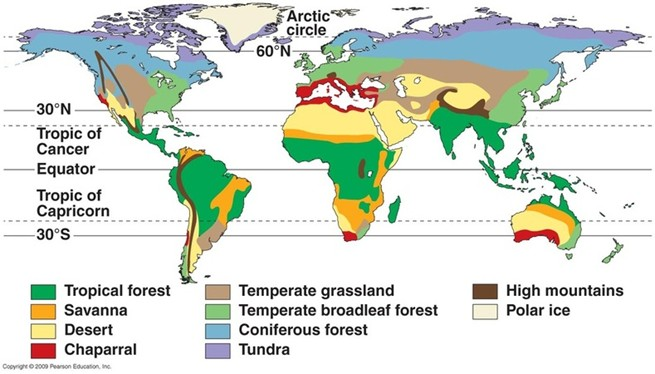
1.1 Tundra Ecosystem
1.1.1. Definition and Location
Tundra is derived from the Finnish word “tunturia”, meaning treeless plain. This ecosystem is known for its harsh conditions, with extremely low temperatures, short growing seasons, and permafrost (permanently frozen subsoil).
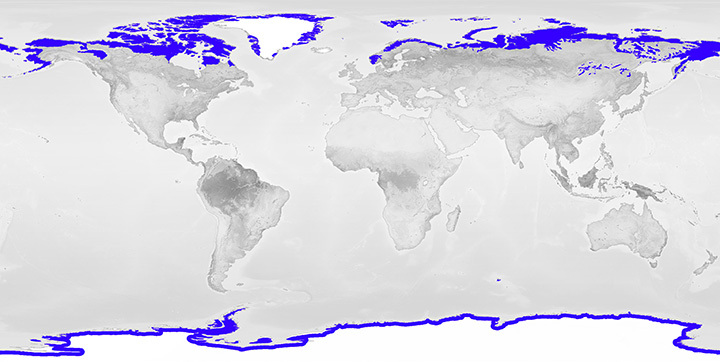
Types of Tundra:
- Arctic Tundra:
- Found in the Northern Hemisphere, encircling the North Pole. This includes parts of Alaska, Canada, Russia, Greenland, and Scandinavia.
- The soil is permanently frozen (permafrost), limiting plant growth.
- Alpine Tundra:
- Occurs at high altitudes on mountains around the world, above the tree line.
- Unlike Arctic tundra, alpine tundra experiences better-drained soil because there’s no permafrost.
- Antarctic Tundra:
- Found on the Antarctic and sub-Antarctic islands. It is less developed than Arctic tundra due to the extreme cold and ice cover.
1.1.2. Key Characteristics of the Tundra Ecosystem
- Climate:
- Cold Temperatures: Average annual temperatures range from -12°C to -6°C. Winters are long and harsh, while summers are short and cool.
- Short Growing Season: The summer season lasts about 50-60 days, with continuous daylight (midnight sun).
- Low Precipitation: Typically 15 to 25 cm annually, mostly in the form of snow.
- Permafrost:
- A layer of permanently frozen ground beneath the surface, which restricts root growth and drainage.
- Thawing of permafrost due to climate change releases methane and carbon dioxide, contributing to global warming.
- Soil:
- Poor in nutrients, acidic, and waterlogged due to permafrost preventing drainage.
- The active layer (topsoil) thaws during summer, allowing plant life to grow.
- Light Conditions:
- Polar Day and Night: The tundra experiences long periods of continuous daylight in summer and prolonged darkness in winter.
1.1.3. Flora and Fauna of the Tundra
Despite harsh conditions, life has adapted remarkably to the tundra.
Flora (Plant Life):
- Low-Growing Plants: Mosses, lichens, grasses, and dwarf shrubs dominate. They grow close to the ground to resist cold winds.
- Examples: Arctic moss, bearberry, Arctic willow, and caribou moss.
- Adaptations: Plants have shallow root systems to cope with the permafrost and can photosynthesize in low-light conditions.
Fauna (Animal Life):
- Mammals:
- Arctic Fox, Caribou (Reindeer), Musk Oxen, Lemmings, Snowshoe Hares.
- These animals have thick fur and fat layers for insulation.
- Birds:
- Snowy Owl, Ptarmigan, Arctic Tern. Many migrate to the tundra during summer for breeding.
- Invertebrates:
- Surprisingly, insects like mosquitoes and blackflies thrive during the summer months.
- Adaptations:
- Animals have adaptations such as seasonal camouflage (white fur in winter, brown in summer), hibernation, and migration to cope with extreme conditions.
1.1.4. Ecological Importance of the Tundra
- Carbon Storage:
- Tundra soils contain large amounts of organic carbon. When permafrost thaws, stored carbon is released as greenhouse gases, contributing to climate change.
- Climate Regulation:
- The tundra reflects sunlight due to its snow and ice cover, helping to cool the Earth (a phenomenon known as the albedo effect).
- Unique Biodiversity:
- Although species diversity is low, the tundra supports unique organisms found nowhere else on Earth.
- Indicator of Climate Change:
- The tundra is highly sensitive to temperature changes and serves as a “canary in the coal mine” for global warming. Melting permafrost, shifting plant zones, and changes in animal migration patterns are all signs of a warming planet.
1.1.5. Human Impact and Threats
- Climate Change:
- Rising global temperatures are causing permafrost thaw, releasing greenhouse gases and altering the ecosystem’s delicate balance.
- Shrinking Ice Caps and reduced snow cover disrupt animal migration and plant growth.
- Resource Extraction:
- Oil and gas exploration in Arctic regions (e.g., Alaska, Siberia) threatens local ecosystems through pollution, habitat destruction, and increased human activity.
- Pollution:
- Pollutants from industrial activities can travel long distances through the atmosphere and accumulate in the Arctic, affecting wildlife and local communities.
- Overgrazing and Tourism:
- In some regions, overgrazing by reindeer and increased tourism disrupt local vegetation and wildlife.
1.1.6. Conservation Efforts
- Protected Areas:
- Establishing national parks and wildlife reserves helps protect tundra biodiversity. Examples include Arctic National Wildlife Refuge in Alaska and Lapland Biosphere Reserve in Russia.
- International Agreements:
- Agreements like the Paris Climate Accord aim to limit global temperature rise, indirectly protecting tundra regions.
- Sustainable Practices:
- Encouraging sustainable tourism and regulated resource extraction can minimize human impact.
- Research and Monitoring:
- Ongoing scientific research helps monitor climate change effects, while indigenous knowledge contributes to sustainable management practices.
1.1.7. Tundra Ecosystem Food Web
Producers:
- Lichens, mosses, grasses, and small shrubs form the base of the food web through photosynthesis.
Primary Consumers:
- Herbivores like lemmings, caribou, and musk oxen feed on tundra vegetation.
Secondary Consumers:
- Predators such as the Arctic fox and snowy owl hunt smaller animals.
Tertiary Consumers:
- Apex predators like the polar bear (in Arctic coastal regions) feed on seals and other mammals.
Decomposers:
- Fungi and bacteria break down organic material, recycling nutrients back into the soil.
1.1.8. Tundra Ecosystem and Climate Change
The tundra is at the forefront of climate change impacts:
- Permafrost Thawing:
- Thawing permafrost releases methane (CH₄) and carbon dioxide (CO₂), potent greenhouse gases that accelerate global warming.
- Shifts in Flora and Fauna:
- Warmer temperatures allow southern species (like shrubs and trees) to move northward, altering the tundra ecosystem.
- Disruption of Indigenous Communities:
- Indigenous peoples who rely on traditional subsistence activities face challenges due to shifting wildlife populations and environmental changes.
The Tundra Ecosystem represents one of the most extreme yet fragile environments on Earth. It is a critical component of global climate regulation and home to uniquely adapted flora and fauna. However, it is under significant threat from climate change, pollution, and resource exploitation. Protecting the tundra requires global cooperation, sustainable practices, and a commitment to reducing greenhouse gas emissions to safeguard this vital ecosystem for future generations.
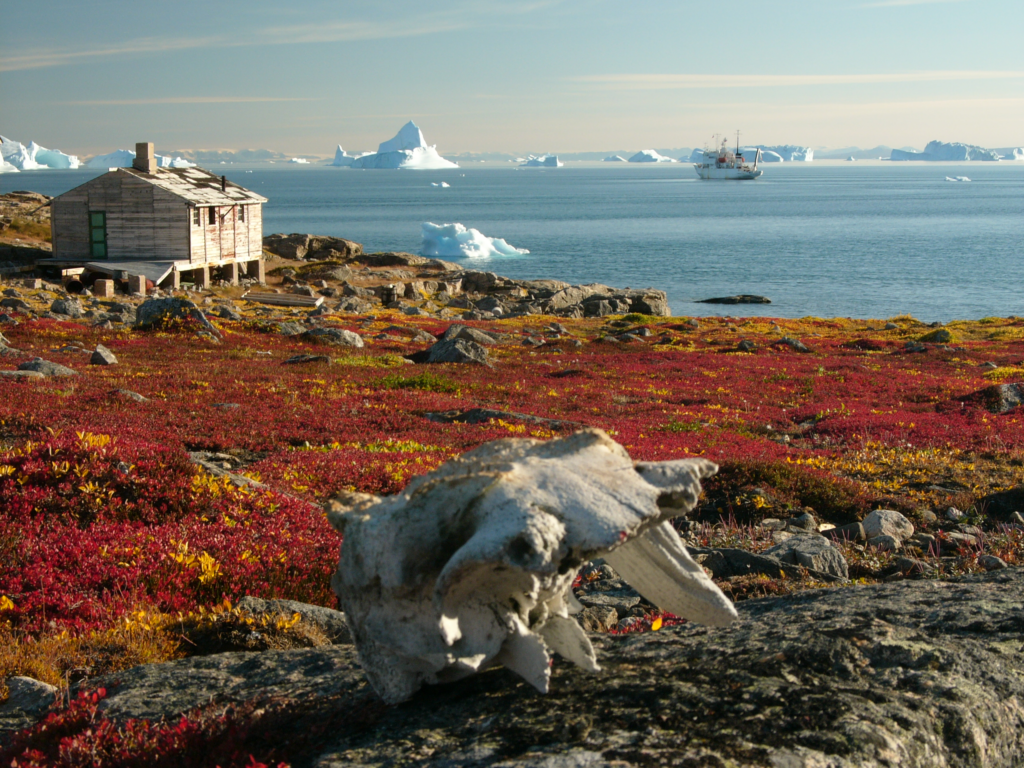
1.2 Forest Ecosystem
Forests are complex biotic communities that establish under optimal conditions of temperature and ground moisture. The soil, climate, and topography determine the distribution and types of trees in a forest.
Types of Forest Ecosystems: An Enhanced Overview
Forests are classified based on climate, geography, and vegetation type, each supporting unique ecological communities. Here’s a detailed exploration with added value on their characteristics, significance, and ecological roles.
1.2.1. Coniferous Forest (Boreal Forest / Taiga)
- Location: Northern parts of North America, Europe, and Asia (Canada, Russia, Scandinavia).
- Climate:
- Cold and harsh, with long, freezing winters and short, mild summers.
- Precipitation: 30-85 cm annually, mostly as snow.
- Temperature: Can drop as low as -50°C in winter.
- Flora:
- Dominated by evergreen coniferous trees such as spruce, fir, and pine.
- Needle-like leaves reduce water loss and are adapted to snow accumulation.
- Fauna:
- Mammals like lynx, wolves, bears, moose, red foxes, and porcupines.
- Amphibians like Hyla (tree frogs) and Rana (frogs).
- Migratory birds during warmer months.
- Soil:
- Thin, nutrient-poor, and acidic podzols due to slow decomposition of conifer needles.
- Limited biological activity in the soil due to cold temperatures.
- Productivity:
- Lower productivity compared to other forest ecosystems due to harsh conditions, limited growing season, and nutrient-deficient soil.
- Ecological Importance:
- The largest terrestrial biome, storing vast amounts of carbon in trees and soil.
- Provides critical habitat for species adapted to cold climates.

1.2.2. Temperate Deciduous Forest
- Location: Eastern North America, Europe, China, and Japan.
- Climate:
- Moderate, with four distinct seasons (spring, summer, autumn, winter).
- Trees shed leaves in the fall and regrow them in spring to conserve water and survive cold winters.
- Precipitation:
- Uniformly distributed throughout the year, around 75-150 cm annually.
- Flora:
- Broad-leafed deciduous trees like oak, maple, beech, and birch.
- Understory includes shrubs, ferns, and wildflowers.
- Fauna:
- Diverse wildlife including deer, raccoons, squirrels, foxes, and songbirds.
- Amphibians like salamanders thrive in moist environments.
- Soil:
- Deep, fertile, and podzolic, rich in organic material from decayed leaves.
- Productivity:
- Moderate to high, supporting diverse flora and fauna.
- Ecological Importance:
- These forests are crucial for carbon sequestration and water cycle regulation.
- Highly impacted by human settlement and agriculture.
1.2.3. Temperate Evergreen Forest
- Location: Coastal regions like the Pacific Northwest (USA and Canada), southern Australia, and New Zealand.
- Climate:
- Mediterranean, with warm, dry summers and cool, moist winters.
- Precipitation is less than in temperate rainforests but sufficient to support dense vegetation.
- Flora:
- Dominated by low, broad-leafed evergreen trees such as oak, eucalyptus, and live oak.
- Many species are fire-adapted, using periodic fires to regenerate and clear competing vegetation.
- Fauna:
- Coyotes, bobcats, deer, owls, and diverse bird species.
- Insects and small mammals thrive in the underbrush.
- Soil:
- Typically thin and nutrient-poor, with adaptations to periodic fires enriching the soil temporarily.
- Productivity:
- Moderate productivity due to adaptation to dry summers and fire cycles.
- Ecological Importance:
- Play a role in fire ecology, maintaining species diversity through natural fire regimes.
1.2.4. Temperate Rain Forest
- Location: Coastal regions with high precipitation like the Pacific Northwest, Chile, and New Zealand.
- Climate:
- Mild temperatures with abundant rainfall (over 200 cm annually).
- Frequent fog contributes additional moisture.
- Flora:
- Dominated by evergreen conifers like Douglas fir, redwoods, and hemlock.
- Dense understory of ferns, mosses, and lichens.
- Fauna:
- Mammals like elk, bears, cougars, and squirrels.
- Rich in birdlife and amphibians due to moist conditions.
- Soil:
- Rich, moist soils with high organic content but prone to nutrient leaching due to heavy rainfall.
- Biodiversity:
- Higher than other temperate forests but lower than tropical rainforests.
- Productivity:
- High productivity due to ample moisture and moderate temperatures.
- Ecological Importance:
- Significant carbon sinks due to large, long-lived trees.
- Crucial habitats for endangered species like the spotted owl.
1.2.5. Tropical Rain Forest
- Location: Near the equator in regions like the Amazon Basin, Congo Basin, and Southeast Asia.
- Climate:
- Hot and humid year-round with temperatures between 20-30°C.
- Annual rainfall exceeds 200 cm.
- Vegetation:
- Extremely dense with tall trees, vines, epiphytes (plants growing on other plants), and understory plants.
- Forest structure is layered: emergent, canopy, understory, and forest floor.
- Fauna:
- Incredible biodiversity including jaguars, sloths, parrots, monkeys, frogs, and millions of insect species.
- Soil:
- Red latosols, thick but nutrient-poor due to rapid nutrient cycling and leaching by rain.
- Biodiversity:
- The highest of all ecosystems, containing over 50% of the Earth’s species.
- Productivity:
- Extremely high productivity, but fragile due to nutrient-poor soils.
- Ecological Importance:
- Major contributor to global oxygen production (“the lungs of the Earth”).
- Critical for climate regulation and carbon sequestration.
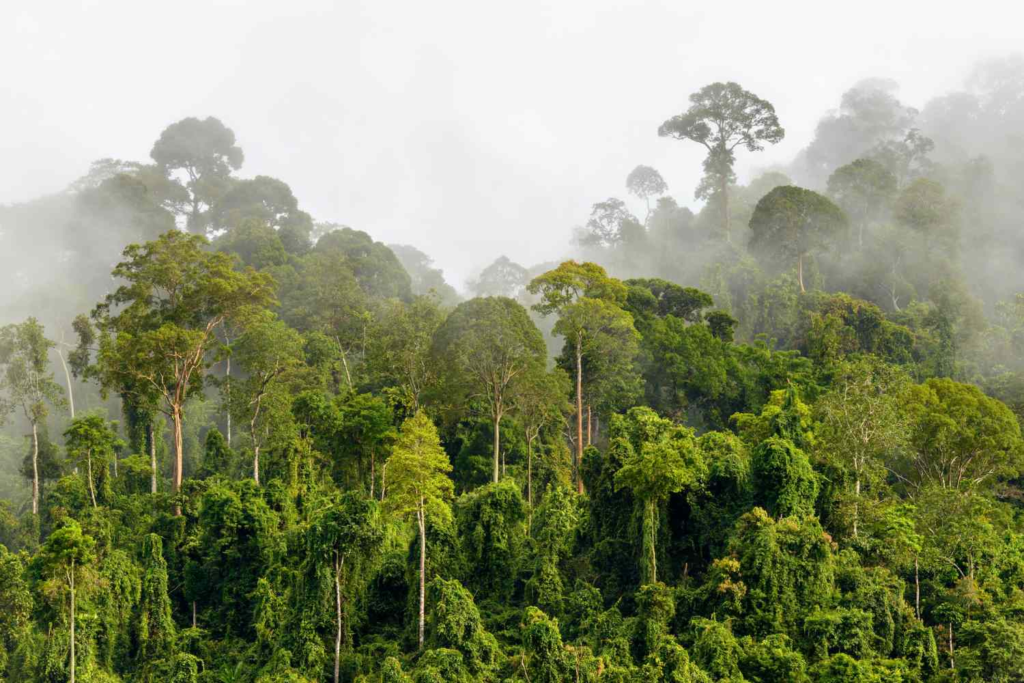
1.2.6. Tropical Seasonal Forest (Monsoon Forest)
- Location: Areas with distinct wet and dry seasons like Southeast Asia, South America, and parts of India.
- Climate:
- Warm temperatures with a pronounced wet season and a dry season.
- Flora:
- Deciduous trees that shed leaves during the dry season to conserve water.
- Includes teak, sal, and bamboo species.
- Fauna:
- Diverse wildlife including tigers, elephants, monkeys, and bird species adapted to seasonal changes.
- Soil:
- More fertile than tropical rainforests, supporting agriculture during the wet season.
- Productivity:
- High productivity during the wet season but reduced during the dry season.
- Ecological Importance:
- Vital for sustaining both biodiversity and agriculture in monsoon regions.
1.2.7. Subtropical Rain Forest
- Location: Areas with high rainfall and minor temperature variations such as parts of China, southern Brazil, and Australia.
- Climate:
- Warm and humid with temperatures ranging from 16-30°C and consistent rainfall throughout the year.
- Flora:
- Similar to tropical rainforests but includes more broad-leafed evergreen trees and ferns.
- Abundant epiphytes (plants like orchids and ferns growing on trees).
- Fauna:
- Comparable to tropical rainforests, with species like colorful birds, primates, reptiles, and a high diversity of insects.
- Soil:
- Fertile due to consistent rainfall but can suffer from leaching in some areas.
- Productivity:
- High productivity, supporting rich biodiversity.
- Ecological Importance:
- Serve as transition zones between tropical and temperate ecosystems, supporting unique species not found elsewhere.
1.3 Indian Forest Types
India’s forests range from tropical rainforests in Kerala to alpine pastures in Ladakh, influenced by climate, soil type, topography, and elevation. The Champion and Seth Classification divides forests into 16 types:
1.3.1. Tropical Wet Evergreen Forests
- Location:
Found in the Western Ghats, Andaman & Nicobar Islands, and Northeastern India (Assam, Arunachal Pradesh, Nagaland). - Climate:
- High rainfall exceeding 250 cm annually.
- Humidity above 75% with temperatures ranging from 25°C to 30°C.
- Flora:
- Dominated by tall, straight trees like jackfruit, betel nut palm, mango, hollock, and ebony.
- Abundant epiphytes like orchids and ferns thrive in the humid environment.
- Canopy layering is prominent, with multiple layers of vegetation, allowing limited light to reach the forest floor.
- Fauna:
- Home to species like the Malabar civet, lion-tailed macaque, great hornbill, and king cobras.
- Rich in insect diversity and amphibians due to constant moisture.
- Ecological Importance:
- High biodiversity, playing a critical role in carbon sequestration.
- Acts as watersheds for major rivers like the Godavari and Krishna.
- Threats:
- Deforestation for plantations (e.g., tea, coffee), logging, and urbanization threaten these forests.
1.3.2. Tropical Semi-Evergreen Forests
- Location:
Predominantly in the Western Ghats, Andaman Islands, and Eastern Himalayas. - Climate:
- Slightly less rainfall than wet evergreen forests (200-250 cm annually).
- Vegetation:
- A mix of evergreen and deciduous trees, creating a dense canopy with species like jackfruit, ajun, and cane.
- Climbers and lianas are common, adding complexity to the forest structure.
- Fauna:
- Includes elephants, gaur (Indian bison), leopards, and a variety of bird species like hornbills and woodpeckers.
- Ecological Importance:
- Serves as a transition zone between evergreen and deciduous forests, supporting diverse species.
- Threats:
- Encroachment for agriculture and illegal logging are major threats.
1.3.3. Tropical Moist Deciduous Forests
- Location:
Widespread across India, covering regions like Jharkhand, Odisha, Chhattisgarh, and the Western Ghats. Absent in the northwestern arid regions. - Climate:
- Moderate rainfall between 100-200 cm annually.
- Trees:
- Dominated by sal, teak, mango, rosewood, bamboo, and sandalwood.
- Trees shed leaves during dry seasons to conserve water.
- Fauna:
- Rich in wildlife such as tigers, leopards, deer, wild boars, and peacocks.
- Soil:
- Rich in nutrients, supporting agriculture in adjacent regions after deforestation.
- Ecological Importance:
- Acts as a buffer between dense forests and human settlements, providing timber and non-timber forest products.
- Threats:
- Overexploitation for timber and conversion to farmlands.
1.3.4. Littoral and Swamp Forests
- Location:
Found in Andaman & Nicobar Islands, Ganga-Brahmaputra deltas (notably the Sundarbans), and along coastal regions. - Climate:
- High humidity and brackish water conditions.
- Adaptations:
- Trees have soft tissue roots like pneumatophores (breathing roots) to survive in waterlogged conditions.
- Mangroves like Rhizophora, Avicennia, and Sonneratia dominate.
- Fauna:
- The Sundarbans is the habitat of the Royal Bengal Tiger, saltwater crocodiles, and mudskippers.
- Rich in aquatic life like crustaceans, fish, and amphibians.
- Ecological Importance:
- Serve as natural barriers against coastal erosion, tsunamis, and cyclones.
- Act as nurseries for many marine species.
- Threats:
- Rising sea levels, pollution, and deforestation for aquaculture threaten these fragile ecosystems.
1.3.5. Tropical Dry Deciduous Forests
- Location:
Common in Northern India, Madhya Pradesh, Gujarat, and Tamil Nadu. - Climate:
- Lower rainfall (50-100 cm annually) and longer dry seasons.
- Trees:
- Includes sal, acacias, babul, and neem.
- Trees are shorter and more widely spaced compared to moist deciduous forests.
- Fauna:
- Wildlife includes blackbucks, chinkara (Indian gazelle), wild boars, and jackals.
- Ecological Importance:
- Provide fuelwood, fodder, and timber for local communities.
- Threats:
- Overgrazing, fuelwood collection, and land degradation are pressing issues.
1.3.6. Tropical Thorn Forests
- Location:
Found in arid regions with black soil in Northwestern, Western, and Southern India, including Rajasthan and Gujarat. - Climate:
- Extremely dry, with rainfall less than 50 cm annually.
- Vegetation:
- Cactus, spurge, caper, acacia, and euphorbia dominate.
- Plants have adaptations like thorns, waxy leaves, and deep roots to conserve water.
- Fauna:
- Home to camels, gazelles, lizards, and desert foxes.
- Ecological Importance:
- Soil stabilizers in arid regions, preventing desertification.
- Threats:
- Desertification, climate change, and unsustainable grazing.
1.3.7. Subtropical Broad-Leaved Forests
- Location:
Found in the Eastern Himalayas and Western Ghats at 900-1800 meters elevation. - Climate:
- Mild winters and ample rainfall throughout the year.
- Flora:
- Dominated by oak, birch, chestnut, and cherry trees.
- Bamboo, ferns, and creepers are abundant.
- Fauna:
- Includes species like the red panda, clouded leopard, and pheasants.
- Ecological Importance:
- Critical for maintaining watersheds and supporting indigenous communities.
1.3.8. Subtropical Pine Forests
- Location:
Found in the Shivalik Hills and Central Himalayas at elevations of 600-1800 meters. - Climate:
- Cooler temperatures with moderate rainfall.
- Trees:
- Dominated by pine, oak, and rhododendron.
- Fauna:
- Species include barking deer, leopards, and monals (Himalayan pheasants).
- Ecological Importance:
- Provide timber and resin, and play a role in soil stabilization.
1.3.9. Montane Wet Temperate Forests
- Location:
Stretch from Nepal to Arunachal Pradesh and in parts of Kerala and Nilgiri Hills. - Climate:
- Cool and moist with significant fog and rainfall.
- Flora:
- Composed of conifers, deciduous trees, and dense undergrowth of mosses and ferns.
- Fauna:
- Home to leopards, barking deer, and numerous bird species.
- Ecological Importance:
- Support unique montane species and act as natural water reservoirs.
1.3.10. Himalayan Moist Temperate Forest
- Location:
Found across the Western to Eastern Himalayas. - Climate:
- Moderate temperatures with high rainfall.
- Trees:
- Dominated by broad-leaved oak, walnut, rhododendron, and bamboo.
- Fauna:
- Includes Himalayan black bear, snow leopards, and monals.
1.3.11. Himalayan Dry Temperate Forest
- Location:
Found in Lahul, Kinnaur, Sikkim, and the Trans-Himalayan regions. - Climate:
- Cold and dry, with minimal rainfall.
- Vegetation:
- Predominantly conifers like pine and fir, along with oak and maple.
- Fauna:
- Includes snow leopards, ibex, and Himalayan tahr.
1.3.12. Sub-Alpine Forest
- Location:
From Kashmir to Arunachal Pradesh, at elevations of 2900-3500 meters. - Flora:
- Juniper, rhododendron, and willow dominate.
- Fauna:
- Species like the red panda, Himalayan tahr, and snow leopard.
1.3.13. Moist Alpine Scrub
- Location:
Higher Himalayan regions and near the Myanmar border. - Vegetation:
- Low scrub vegetation, rhododendron, mosses, and ferns.
- Fauna:
- Himalayan marmots, blue sheep, and snowcock.
1.3.14. Dry Alpine Scrub
- Location:
Elevations between 3000-4900 meters. - Vegetation:
- Dwarf plants like black juniper and honeysuckle adapted to harsh, cold, and dry conditions.
- Fauna:
- Home to snow leopards, Tibetan wolves, and yak.
India’s forests are a testament to its ecological richness and diversity, ranging from the humid mangroves of Sundarbans to the arid thorn forests of Rajasthan and the snow-clad alpine scrubs of the Himalayas. Each forest type plays a critical role in biodiversity conservation, climate regulation, and supporting human livelihoods. However, they face significant threats from deforestation, climate change, and industrial development, emphasizing the urgent need for sustainable forest management and conservation efforts.
Importance of Forests:
- Forests are among the most diverse and important ecosystems on Earth. Each type of forest, from the cold boreal taiga to the lush tropical rainforests, plays a crucial role in regulating the planet’s climate, supporting biodiversity, and providing resources for both humans and wildlife. However, these ecosystems face threats from deforestation, climate change, and human activities, emphasizing the need for conservation and sustainable management to protect these invaluable natural resources.
Deforestation
- Definition: The large-scale clearing of forests, often for urbanization, agriculture, or resource extraction.
- Causes:
- Shifting Cultivation: Land cleared and burned for farming, then abandoned.
- Development Projects: Construction of dams, roads, and railways.
- Fuel Requirements: Increased demand for firewood.
- Industrial Use: Wood for paper, furniture, and raw materials.
- Other Factors: Overgrazing, mining, urbanization, and natural disasters.
- Effects:
- Reduced biodiversity, lower groundwater levels, altered precipitation patterns, and habitat destruction.
- Disruption of nutrient cycles and increased soil erosion.
1.4 Grassland Ecosystem
A grassland ecosystem is a terrestrial ecosystem dominated by grasses, with few trees or shrubs. Grasslands are vital for biodiversity, climate regulation, and agriculture. They cover about 25% of the Earth’s land surface and are home to a wide range of plant and animal species adapted to open, windy environments with varying rainfall.
1.4.1 Definition of Grassland Ecosystem
A grassland ecosystem is a region where the dominant vegetation is grasses and other herbaceous (non-woody) plants. These ecosystems are found in both tropical and temperate regions, characterized by moderate rainfall that is insufficient to support large forests but adequate for grasses and shrubs.
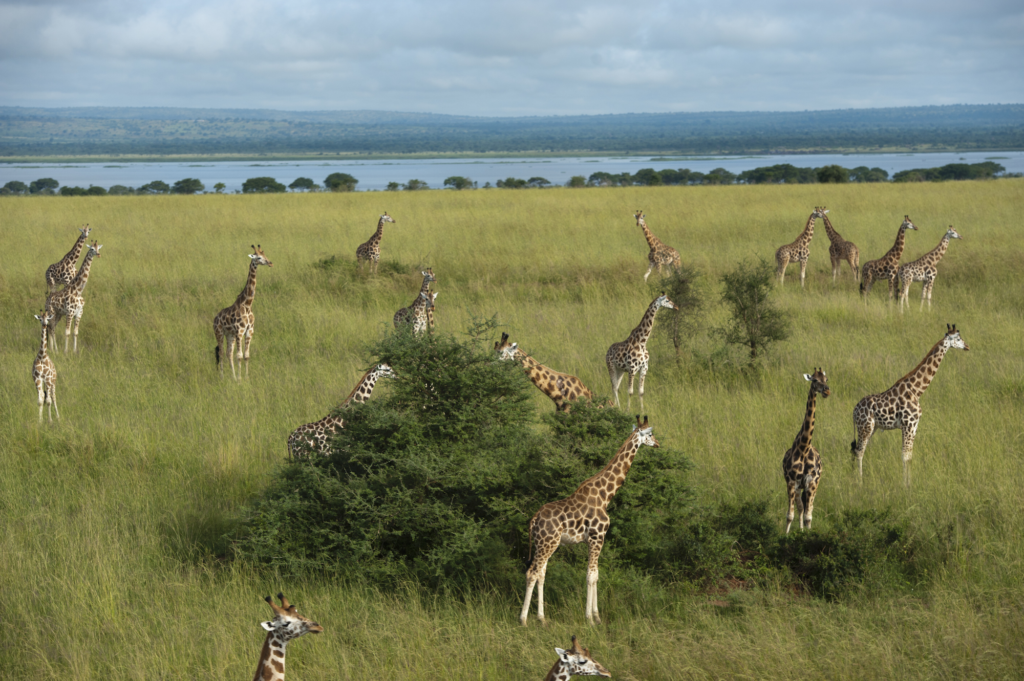
1.4.2 Types of Grassland Ecosystems
Grasslands are broadly classified into tropical and temperate grasslands, with distinct climatic conditions, vegetation, and wildlife.
- Tropical Grasslands (Savannas):
- Location: Found in regions like Africa (Serengeti), South America (Brazilian Cerrado), India, and Australia.
- Climate:
- Warm temperatures year-round with distinct wet and dry seasons.
- Annual rainfall between 50-150 cm.
- Flora:
- Dominated by grasses like red oat grass and lemon grass with scattered trees such as acacias and baobabs.
- Fauna:
- Home to large herbivores like elephants, zebras, giraffes, and antelopes, and predators like lions, cheetahs, and hyenas.
- Ecological Importance:
- Supports some of the largest migrations of mammals and is crucial for carbon storage in its soils.
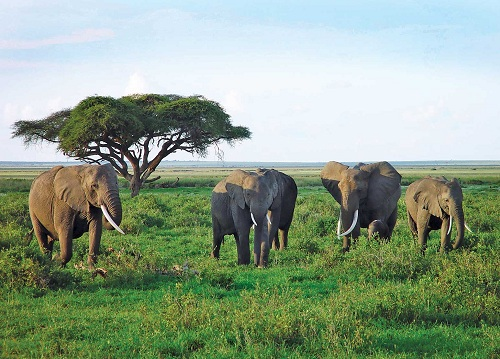
- Temperate Grasslands:
- Location: Found in North America (Prairies), South America (Pampas), Eurasia (Steppes), and South Africa (Veldts).
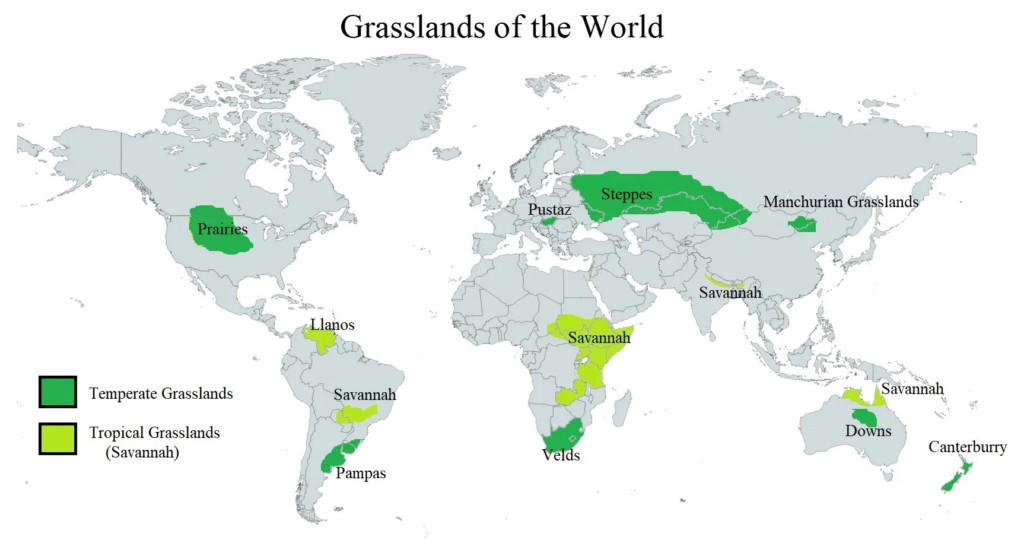
- Climate:
- Hot summers and cold winters with moderate rainfall (25-75 cm annually).
- Prone to droughts and wildfires.
- Flora:
- Dominated by perennial grasses like buffalo grass, blue grama, and ryegrass.
- Few or no trees due to insufficient rainfall.
- Fauna:
- Includes bison, prairie dogs, antelope, foxes, and burrowing owls.
- Ecological Importance:
- Known as the world’s breadbasket due to extensive agriculture (wheat, corn).
- Rich soils (chernozem) support crop cultivation.
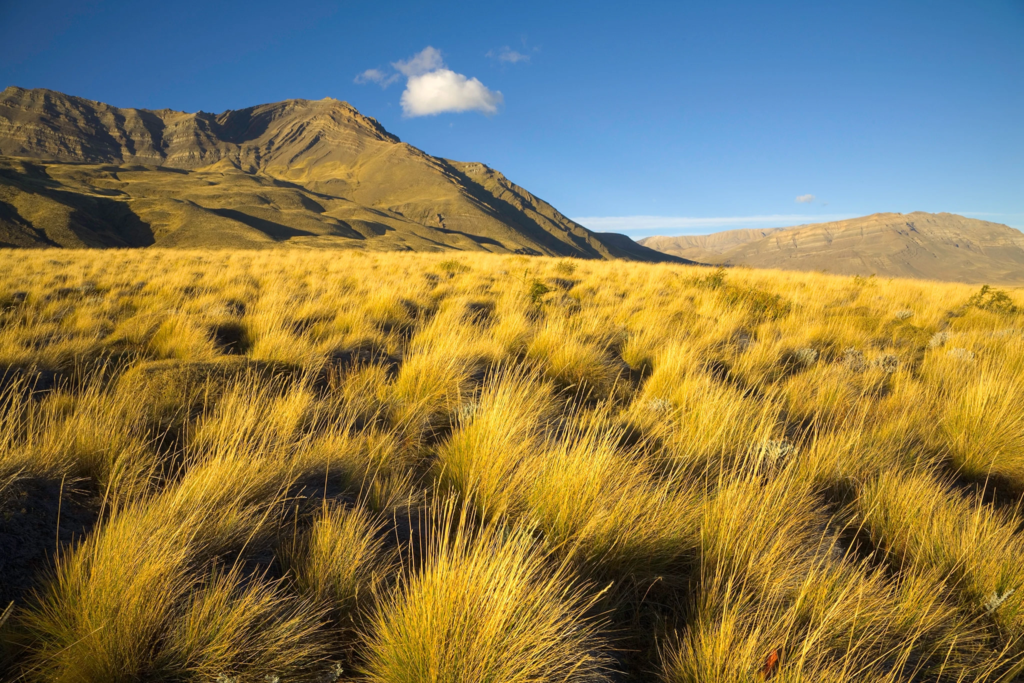
- Flooded Grasslands and Savannas:
- Location: Found in areas with seasonal flooding like the Pantanal in South America and the Sudd in South Sudan.
- Climate:
- Alternates between wet and dry conditions.
- Flora:
- Flood-tolerant grasses and reeds dominate.
- Fauna:
- Rich in aquatic and semi-aquatic species like hippos, waterbirds, and fish.
- Ecological Importance:
- Act as natural water filters and support fisheries.

1.4.3 Structure of Grassland Ecosystem
Grassland ecosystems have a simple structure compared to forests but are equally dynamic.
- Producers:
- Grasses (e.g., bluestem, fescue), herbs, and legumes form the primary producers.
- Some regions have shrubs and small trees.
- Consumers:
- Primary Consumers (Herbivores):
- Large grazers like bison, zebras, gazelles, and kangaroos.
- Small herbivores like rodents, rabbits, and insects (grasshoppers, beetles).
- Secondary Consumers (Carnivores):
- Predators like lions, coyotes, hawks, and foxes.
- Tertiary Consumers:
- Top predators like cheetahs, wolves, and eagles.
- Primary Consumers (Herbivores):
- Decomposers:
- Fungi, bacteria, and invertebrates like earthworms break down organic material, enriching the soil.
1.4.4 Climate and Environmental Conditions
- Temperature:
- Varies widely between tropical and temperate grasslands.
- Temperate grasslands experience extreme temperature fluctuations (hot summers, cold winters).
- Tropical savannas maintain warmer temperatures year-round.
- Precipitation:
- Moderate rainfall, typically between 25-150 cm annually.
- Rainfall is often seasonal, with wet and dry periods.
- Fire and Grazing:
- Wildfires are common, playing a vital role in recycling nutrients and controlling tree growth.
- Grazing by herbivores maintains grass dominance and prevents woody plant encroachment.
- Soil:
- Fertile soils rich in organic matter, especially in temperate grasslands (e.g., chernozem in prairies).
- In tropical savannas, soils are often lateritic and less fertile due to leaching.
1.4.5 Flora and Fauna of Grassland Ecosystems
- Flora:
- Grasses like blue grama, ryegrass, buffalo grass, and red oat grass dominate.
- Wildflowers and herbs add diversity, particularly in temperate grasslands.
- Scattered trees and shrubs in tropical savannas include acacias, baobabs, and eucalyptus.
- Fauna:
- Herbivores:
- Large grazers like bison (prairies), zebras (savannas), kangaroos (Australia), and antelope (Africa).
- Carnivores:
- Predators like lions, cheetahs, hyenas, wolves, and foxes.
- Birds:
- Raptors like hawks and eagles, ground-nesting birds like quail and ostriches.
- Insects:
- Diverse pollinators (bees, butterflies), decomposers (dung beetles), and grazers (grasshoppers).
- Herbivores:
1.4.6 Functions and Importance of Grassland Ecosystems
- Biodiversity Support:
- Grasslands support diverse plant and animal species, many of which are endemic.
- They provide critical habitat for migratory species like wildebeest and birds.
- Soil Fertility and Agriculture:
- Temperate grasslands have some of the richest soils on Earth, making them crucial for agriculture.
- Grasslands in North America (Prairies) and Eurasia (Steppes) are major grain-producing regions.
- Carbon Sequestration and Climate Regulation:
- Grasslands store significant amounts of carbon in their soils, playing a role in climate regulation.
- Deep-rooted grasses help in soil carbon storage and preventing erosion.
- Water Cycle Regulation:
- Grasslands help maintain the water cycle by retaining moisture and preventing flooding.
- Livelihoods and Grazing:
- Grasslands support pastoral communities and are essential for livestock grazing.
- Pollination and Pest Control:
- Grasslands support pollinators and predatory insects that control pest populations.
1.4.7 Threats to Grassland Ecosystems
- Agricultural Expansion:
- Large-scale conversion of grasslands into farmland threatens native biodiversity.
- Over-cultivation leads to soil degradation and desertification.
- Overgrazing:
- Excessive grazing by livestock leads to soil erosion, loss of vegetation, and invasive species encroachment.
- Climate Change:
- Alters precipitation patterns, leading to more frequent droughts and desertification.
- Increases in temperature can shift grassland ecosystems towards deserts.
- Invasive Species:
- Non-native plants can outcompete native grasses, altering ecosystem dynamics.
- Urbanization and Infrastructure Development:
- Roads, cities, and industrial activities fragment grasslands, disrupting wildlife corridors.
1.4.8 Conservation and Sustainable Management of Grasslands
- Protected Areas and National Parks:
- Establishing grassland reserves and protected areas (e.g., Serengeti National Park in Tanzania).
- Sustainable Grazing Practices:
- Rotational grazing and controlled stocking rates to prevent overgrazing.
- Restoration and Rewilding:
- Restoring degraded grasslands by reintroducing native species and removing invasive plants.
- Fire Management:
- Controlled burns to maintain grassland health and prevent woody plant encroachment.
- Community Involvement:
- Engaging local communities in grassland management ensures sustainable practices and livelihoods.
- Climate Change Mitigation:
- Grasslands are integrated into global climate strategies for carbon sequestration.
1.4.9 Grassland Ecosystem Food Web
- Producers:
- Grasses, herbs, and wildflowers that convert sunlight into energy.
- Primary Consumers (Herbivores):
- Bison, zebras, gazelles, prairie dogs, and insects like grasshoppers.
- Secondary Consumers (Carnivores):
- Lions, wolves, coyotes, and hawks that prey on herbivores.
- Tertiary Consumers:
- Top predators like cheetahs, eagles, and humans (as apex consumers).
- Decomposers:
- Fungi, bacteria, and insects like dung beetles that recycle nutrients back into the soil.
The grassland ecosystem is a vital component of the Earth’s biosphere, supporting biodiversity, agriculture, and climate regulation. From the savannas of Africa to the prairies of North America, grasslands play a crucial role in carbon storage, food production, and wildlife conservation. However, they face significant threats from agriculture, overgrazing, and climate change. Sustainable management and conservation efforts are essential to preserve these ecosystems for future generations.
1.5 Desert Ecosystem
A desert ecosystem is a terrestrial environment characterized by extremely low rainfall, typically less than 25 cm annually, and extreme temperature fluctuations. Despite harsh conditions, deserts are home to uniquely adapted flora and fauna that thrive under limited water availability, intense sunlight, and nutrient-poor soils. Deserts cover approximately one-third of Earth’s land surface and play a crucial role in the planet’s ecological balance.
1.5.1 Definition of Desert Ecosystem
A desert ecosystem refers to an area where precipitation is scarce, leading to arid or semi-arid conditions. These ecosystems exhibit extreme temperatures, with hot deserts experiencing scorching daytime heat and cold deserts having frigid winters. The lack of water results in sparse vegetation, specialized animal adaptations, and unique soil compositions.
1.5.2 Types of Desert Ecosystems
Deserts are classified based on their climatic conditions into hot and cold deserts, each with distinct features.
- Hot Deserts:
- Examples:
- Thar Desert (India), Sahara Desert (Africa), Atacama Desert (Chile), and Sonoran Desert (North America).
- Climate:
- Extremely hot during the day (temperatures can exceed 45°C) and cold at night due to lack of moisture.
- Annual rainfall is typically less than 25 cm, often occurring in short, intense bursts.
- Vegetation:
- Dominated by xerophytic plants like cacti, acacias, and succulents with adaptations to minimize water loss.
- Fauna:
- Includes reptiles (e.g., snakes, lizards), insects, small mammals like jerboas, and birds like vultures and owls.
- Examples:
- Cold Deserts:
- Examples:
- Ladakh and Spiti Valley (India), Gobi Desert (Mongolia), and Antarctic Desert.
- Climate:
- Characterized by cold winters with temperatures dropping below -30°C, and mild summers.
- Receives low precipitation, often as snow.
- Vegetation:
- Sparse, consisting of shrubs, grasses, and lichens adapted to freezing temperatures.
- Fauna:
- Species include snow leopards, Tibetan antelopes, yaks, and marmots.
- Examples:
3.6.3 Adaptations in Desert Ecosystems
Desert plants and animals have developed remarkable physiological and behavioral adaptations to survive in extreme conditions.
- Plant Adaptations:
- Succulent Stems:
- Plants like cacti store water in their thick, fleshy stems for use during droughts.
- Reduced or No Leaves:
- Leaves are minimized to spines (e.g., in cacti) to reduce water loss through transpiration.
- Extensive Root Systems:
- Deep roots reach underground water (e.g., mesquite trees), while shallow, widespread roots absorb surface moisture quickly after rain.
- Waxy Coating:
- A thick cuticle on leaves and stems minimizes water loss.
- Dormancy:
- Some plants remain dormant during dry seasons and grow rapidly during brief periods of moisture.
- Succulent Stems:
- Animal Adaptations:
- Nocturnal Habits:
- Many animals, such as foxes and rodents, are nocturnal, being active at night to avoid the daytime heat.
- Efficient Water Conservation:
- Animals like kangaroo rats extract water from their food and produce concentrated urine to conserve water.
- Long Legs and Ears:
- Species like camels and fennec foxes have long legs and large ears to dissipate heat efficiently.
- Burrowing:
- Animals like lizards and insects burrow into the cooler ground to escape the heat.
- Thick Fur or Scales:
- Provides insulation from extreme temperatures (e.g., yaks in cold deserts).
- Nocturnal Habits:
1.5.4 Indian Desert Ecosystem
India has both hot and cold desert ecosystems, each with unique biodiversity and environmental significance.
- The Thar Desert (Hot Desert):
- Location:
- Spanning across Rajasthan, parts of Gujarat, Punjab, and Haryana.
- Climate:
- Scorching summers with temperatures soaring above 50°C and cold winters.
- Annual rainfall is around 10-50 cm.
- Vegetation:
- Dominated by thorny bushes, acacias, cacti, and grasses like sewan and dhaman.
- Fauna:
- Home to species like the Great Indian Bustard (critically endangered), blackbuck, desert fox, and chinkara (Indian gazelle).
- The Rann of Kutch is an important site for migratory birds like flamingos and cranes.
- Ecological Importance:
- The desert supports pastoral communities and is a cultural hub with rich traditions.
- Location:
- Cold Deserts of India:
- Location:
- Found in Ladakh (Jammu & Kashmir), Spiti Valley (Himachal Pradesh), and parts of Sikkim.
- Climate:
- Extremely cold with winter temperatures dropping below -30°C and limited summer warmth.
- Annual precipitation is less than 20 cm, mostly as snow.
- Vegetation:
- Sparse, consisting of dwarf shrubs, mosses, and grasses.
- Fauna:
- Rare species like the snow leopard, Tibetan wild ass (kiang), Himalayan blue sheep (bharal), and marmots.
- Birds like the Lammergeier (bearded vulture) and Himalayan griffon are common.
- Ecological Importance:
- Supports unique biodiversity adapted to extreme cold and low oxygen levels.
- Location:
1.5.5 Climate and Environmental Conditions in Deserts
- Temperature Extremes:
- Hot deserts experience scorching daytime heat and cool nights, while cold deserts face frigid winters with mild summers.
- Precipitation:
- Both types of deserts receive less than 25 cm of rainfall annually.
- Rainfall is often sporadic and unpredictable, leading to flash floods in otherwise dry areas.
- Soil Conditions:
- Desert soils are often sandy, gravelly, or rocky, with low organic content.
- Saline soils are common in areas like the Rann of Kutch due to high evaporation rates.
1.5.6 Functions and Importance of Desert Ecosystems
- Biodiversity Support:
- Deserts harbor unique species adapted to extreme conditions, many of which are endemic and rare.
- They provide critical habitats for migratory birds and endangered species.
- Climate Regulation:
- Deserts play a role in climate regulation by reflecting sunlight due to light-colored sands (high albedo effect).
- Cold deserts in particular act as climate indicators, reflecting changes in global warming.
- Cultural and Economic Importance:
- Deserts support indigenous communities, pastoralism, and agriculture in oases.
- Areas like the Thar Desert are rich in cultural heritage and attract tourism.
- Natural Resources:
- Deserts are rich in minerals like gypsum, salt, and phosphates.
- The Thar Desert is an important region for wind and solar energy development.
1.5.7 Threats to Desert Ecosystems
- Desertification:
- Overgrazing, deforestation, and unsustainable agricultural practices lead to the expansion of deserts into fertile lands.
- Climate Change:
- Rising global temperatures exacerbate water scarcity, altering rainfall patterns and increasing the frequency of droughts.
- Habitat Loss and Fragmentation:
- Urbanization, mining, and infrastructure development disrupt fragile desert ecosystems.
- Invasive Species:
- Introduction of non-native plants and animals can outcompete native desert species, disrupting the ecosystem balance.
1.5.8 Conservation and Sustainable Management of Desert Ecosystems
- Protected Areas and National Parks:
- Establishing protected reserves like the Desert National Park in Rajasthan to conserve endangered species like the Great Indian Bustard.
- Combatting Desertification:
- Implementing sustainable land management practices, afforestation with native species, and soil conservation techniques.
- Water Management:
- Use of traditional water conservation methods like kunds and stepwells to combat water scarcity in arid regions.
- Community Participation:
- Involving local communities in conservation efforts ensures sustainable livelihoods and environmental stewardship.
- Climate Adaptation Strategies:
- Developing strategies to mitigate the effects of climate change, such as drought-resistant crops and early warning systems for extreme weather.
1.5.9 Desert Ecosystem Food Web
- Producers:
- Cacti, grasses, shrubs, and succulents that convert sunlight into energy.
- Primary Consumers (Herbivores):
- Camels, blackbuck, kangaroo rats, gazelles, and insects like locusts.
- Secondary Consumers (Carnivores):
- Foxes, lizards, snakes, and birds of prey like eagles and vultures.
- Tertiary Consumers:
- Apex predators like wolves, snow leopards (in cold deserts), and humans (as hunters and pastoralists).
- Decomposers:
- Fungi, bacteria, and insects like beetles that recycle nutrients in the nutrient-poor desert soils.
The desert ecosystem, though harsh and arid, is a vital component of the Earth’s environment, supporting unique biodiversity, cultural heritage, and natural resources. Both hot and cold deserts are home to specialized species and adapted communities that thrive in extreme conditions. However, climate change, desertification, and human activities threaten these fragile ecosystems. Conservation efforts, sustainable management, and community involvement are crucial to preserving the ecological integrity and cultural richness of deserts worldwide
Desertification
- Definition: The degradation of land into desert-like conditions, often human-induced.
- Causes: Overpopulation, overgrazing, deforestation, and development projects.
- Impact in India: 69.6% of land is dry; 81.45 million hectares are undergoing desertification.
- Control Measures:
- Afforestation, watershed programs, and employment schemes.
1.6 Chaparral Ecosystem
The Chaparral Ecosystem is a shrub-dominated biome characterized by hot, dry summers and mild, wet winters. This ecosystem is adapted to fire-prone environments and features unique flora and fauna that thrive under Mediterranean climates. Chaparral ecosystems are found in various parts of the world but are most prominently associated with California.
1.6.1. Definition of Chaparral Ecosystem
The Chaparral is a temperate shrubland biome dominated by evergreen shrubs and drought-resistant plants. This ecosystem experiences seasonal drought, and its plants and animals are adapted to survive frequent wildfires. Chaparral covers around 5% of California’s landscape and is also present in other Mediterranean-type regions globally.
1.6.2. Global Distribution of Chaparral Ecosystems
Chaparral ecosystems occur in regions with Mediterranean climates—characterized by wet winters and hot, dry summers.
- California Chaparral (USA):
- Found along the coastal ranges, including the Santa Monica Mountains, Sierra Nevada foothills, and San Gabriel Mountains.
- Mediterranean Basin (Europe, North Africa, Middle East):
- Known as maquis or garrigue in this region.
- Chile (South America):
- Referred to as matorral in the central Chilean coast.
- Southwest Australia:
- Known as kwongan, characterized by high plant diversity.
- Cape Region of South Africa:
- Known as fynbos, this region is a biodiversity hotspot.
1.6.3. Climate of Chaparral Ecosystems
- Temperature:
- Hot, dry summers with temperatures reaching up to 40°C (104°F).
- Mild, wet winters with temperatures ranging between 10-15°C (50-59°F).
- Precipitation:
- Receives 25-50 cm (10-20 inches) of rainfall annually, mostly during winter.
- Drought conditions prevail in summer.
- Fire Regimes:
- Frequent wildfires are a natural part of the chaparral ecosystem, occurring every 10-40 years.
- Fire-adapted plants regenerate quickly after fires.
1.6.4. Flora of Chaparral Ecosystems
The chaparral is dominated by sclerophyllous (hard-leaved) plants adapted to dry conditions and wildfires.
- Evergreen Shrubs:
- Manzanita (Arctostaphylos spp.), chamise (Adenostoma fasciculatum), and sagebrush (Artemisia californica).
- These shrubs have thick, waxy leaves to reduce water loss.
- Small Trees:
- Toyon (Heteromeles arbutifolia), live oaks, and junipers.
- Trees are often stunted due to poor soil and limited water.
- Herbs and Grasses:
- Lupines, poppies, and grasses thrive in open areas.
- Fire-Adapted Plants:
- Many plants have thick bark, deep roots, or fire-resistant seeds that enable them to survive and regenerate after fires.
1.6.5. Fauna of Chaparral Ecosystems
The chaparral supports a diverse range of mammals, birds, reptiles, and insects, many of which are adapted to heat and drought.
- Mammals:
- Coyotes, bobcats, mule deer, gray foxes, and rabbits.
- Small mammals like ground squirrels and chipmunks are common.
- Birds:
- California quail, wrens, hummingbirds, hawks, and owls.
- Birds often nest in shrubs for protection.
- Reptiles and Amphibians:
- Lizards, rattlesnakes, gopher snakes, and toads thrive in warm conditions.
- Insects:
- Beetles, butterflies, and pollinators like bees are abundant.
1.6.6. Adaptations in the Chaparral Ecosystem
- Plant Adaptations:
- Sclerophyllous leaves reduce water loss and withstand intense sunlight.
- Deep root systems access groundwater during droughts.
- Fire-resistant seeds and resprouting shrubs allow plants to recover quickly after wildfires.
- Animal Adaptations:
- Nocturnal behavior helps animals avoid daytime heat.
- Burrowing provides shelter from extreme temperatures.
- Water conservation through efficient metabolic processes.
1.6.7. Ecological Importance of Chaparral Ecosystems
- Biodiversity Hotspot:
- The chaparral is home to numerous endemic species found nowhere else in the world.
- California’s chaparral is among the most species-rich shrubland ecosystems globally.
- Fire Ecology:
- Fires play a vital role in recycling nutrients and maintaining plant diversity.
- Carbon Sequestration:
- Chaparral plants contribute to carbon storage, mitigating climate change.
- Erosion Control:
- Deep-rooted plants help prevent soil erosion in hilly and mountainous terrains.
- Water Regulation:
- Chaparral ecosystems regulate watersheds and support aquifers in semi-arid regions.
Other Links:
- Sustainable Development Goals (SDGs): A Comprehensive Analysis 2025
- 2030 Agenda for Sustainable Development: A Comprehensive Analysis
- Environmental Impact Assessment (EIA) Explained : UPSC 2025
- Environmental Impact Assessment (EIA): A Comprehensive Overview
Frequently Asked Questions (FAQs) :
1. What are Terrestrial Ecosystems?
Answer: Terrestrial ecosystems are land-based ecosystems that include various biomes such as forests, grasslands, deserts, and tundras. They consist of living organisms (plants, animals, microbes) interacting with each other and with non-living components like soil, air, and climate.
2. What are the main types of Terrestrial Ecosystems?
Answer: The primary types of terrestrial ecosystems include:
- Forests (Tropical, Temperate, Boreal)
- Grasslands (Savannas, Prairies, Steppes)
- Deserts (Hot and Cold)
- Tundra (Arctic and Alpine)
- Chaparral (Mediterranean shrublands)
3. How do Terrestrial Ecosystem differ from Aquatic Ecosystems?
Answer: Terrestrial ecosystem exist on land and are influenced by factors like soil, temperature, and precipitation. In contrast, aquatic ecosystems occur in water bodies and are influenced by salinity, water depth, and light penetration.
4. What factors influence Terrestrial Ecosystem?
Answer: Key factors include:
- Climate (temperature, rainfall patterns)
- Soil type and fertility
- Altitude and latitude
- Sunlight availability
- Human activities (deforestation, agriculture)
5. What is the role of Terrestrial Ecosystem in the environment?
Answer: Terrestrial ecosystems play crucial roles in:
- Carbon sequestration (absorbing CO₂)
- Biodiversity support
- Water and nutrient cycling
- Climate regulation
- Providing resources like food, timber, and medicinal plants.
6. How does climate change affect Terrestrial Ecosystems?
Answer: Climate change leads to:
- Shifts in vegetation zones (e.g., forests moving poleward)
- Increased frequency of wildfires
- Desertification in arid regions
- Loss of biodiversity due to altered habitats and temperature stress.
7. What are some examples of biodiversity in Terrestrial Ecosystems?
Answer:
- Forests: Tigers, oak trees, hornbills.
- Grasslands: Bison, zebras, prairie dogs.
- Deserts: Cacti, camels, lizards.
- Tundra: Polar bears, lichens, Arctic foxes.
8. What are the major threats to Terrestrial Ecosystems?
Answer:
- Deforestation and land degradation
- Pollution (air, soil, and water)
- Climate change and global warming
- Urbanization and habitat fragmentation
- Overgrazing and agricultural expansion
9. How can Terrestrial Ecosystems be conserved?
Answer:
- Protected areas (national parks, wildlife sanctuaries)
- Afforestation and reforestation
- Sustainable land-use practices
- Combating desertification through soil conservation
- Reducing carbon emissions to mitigate climate change
10. Why are Terrestrial Ecosystems important for humans?
Answer:
- Provide food, medicine, timber, and fiber
- Regulate the climate and water cycles
- Act as carbon sinks to reduce greenhouse gases
- Support livelihoods for millions of people
- Offer recreational and aesthetic value



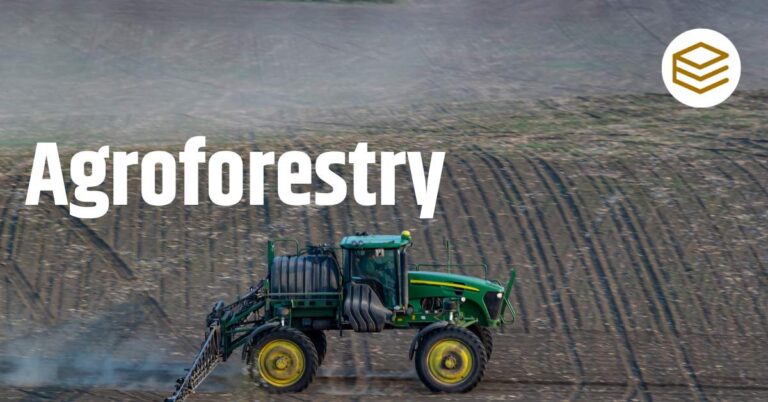
[…] Terrestrial Ecosystem […]